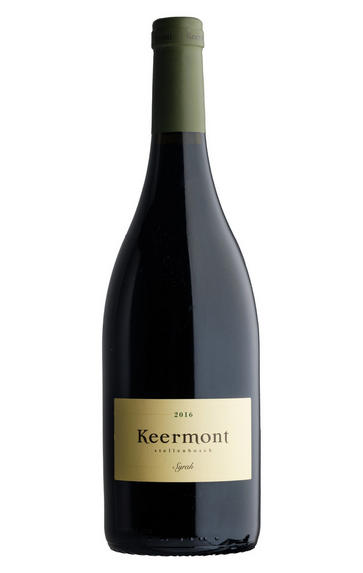
2016 Keermont, Syrah, Stellenbosch, South Africa
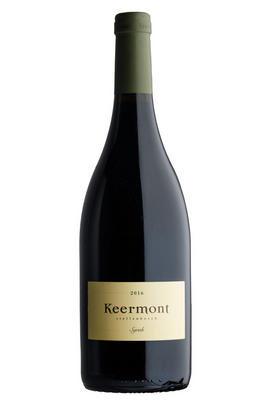
Critics reviews
The 2016 Syrah has a mellow, warm, inviting bouquet of red cherries, crushed strawberry, star anise and orange liqueur scents. The palate is medium-bodied with lithe tannins, quite fleshy and satin-like in texture, though it decides not to exert too much grip on the finish. This is drinking perfectly now and should continue to do so for the next 10 - 12 years.
Drink 2022 - 2032
Neal Martin, Vinous.com (July 2021)
Mid-smudgy garnet. Dark and peppery with a lovely top note of smoked meat. Dark and chewy on the palate too. Somewhere between northern and southern Rhône in peppery elegance and generous fruit. Tannins are resolved, but finish is slightly hard. Definitely needs food.
Drink 2021 - 2024
Julia Harding MW, JancisRobinson.com (November 2022)
Smoky and saline nose displaying tones of bacon, blackberry, graphite and liquorice, with violet and roses notes. Dense and bold, with a luscious fruit core.
Drink 2022 - 2031
Greg Sherwood MW, Daniel Grigg, Roger Jones, Decanter.com (April 2022)
About this WINE
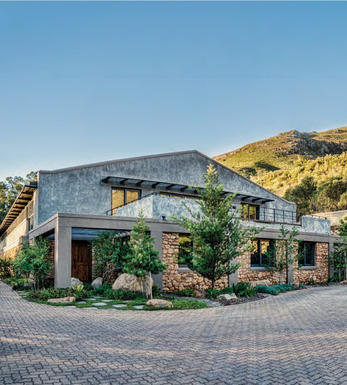
Keermont Vineyards
Keermont intends to create wines that reflect the beautiful place from which they come and the particular year’s vintage conditions. The wines are made as naturally as possible with very little vineyard irrigation and minimal intervention in the winery.
The estate has been owned by the Wraith family since 2003. Two thousand and five saw the start of a significant vineyard-planting programme on lands that had been fallow for several years. Seventeen hectares were planted over four years to add to an existing eight hectares of older vineyards. Keermont’s official maiden vintage came in 2007.
The farm is high up in the picturesque Blaauwklippen Valley, or Paradyskloof (Paradise Valley) in South Africa. Due to the steepness of the terrain, the altitude climbs 200m within the 1.7km length of the farm, and the vineyards are planted between 250m and 400m above sea level. Thus, the vines planted over these different terrains produce wines with good complexity and various flavors. In addition, the proximity to False Bay and the Indian Ocean also moderates the climate in the vineyard.
Winemaker Alex Starey oversees the vineyards and makes the estate’s wines. Employed at the start of the redevelopment of the farm in 2005, he has traveled and worked in wine regions, including Maipo Valley in Chile, Penedès and Priorat in Spain, and St-Emilion and Côte-Rôtie in France.
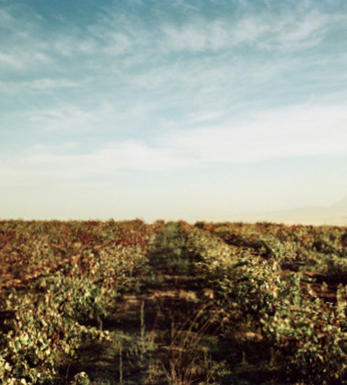
Stellenbosch
Stellenbosch is South Africa’s best-known wine region, producing a wide variety of wines from leading estates, even though it accounts for less than 20 per cent of the country’s total production. Designated wards within the wine region are Jonkershoek Valley, Simonsberg-Stellenbosch, Bottelary, Devon Valley and Papegaaiberg.
At 17,500 hectares, Stellenbosch remains the Cape's most famous and important fine wine district, thanks to its proximity to Cape Town, to the cooling influences of False Bay, its mountainous (ie Helderberg, Simonsberg), granitic topography and its centres of learning such as Elsenburg Agricultural College.
It's notable for the refinement of its Cabernet Sauvignon and Chardonnay, especially from the likes of Glenelly Estate, Keermont Vineyards Oldenburg Vineyards, Raats Family and Anwilka
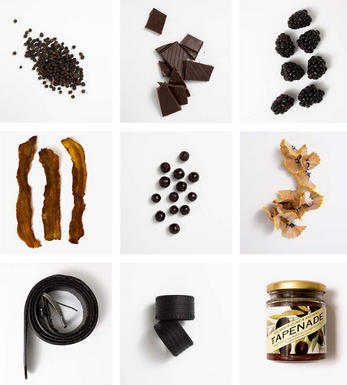
Syrah/Shiraz
A noble black grape variety grown particularly in the Northern Rhône where it produces the great red wines of Hermitage, Cote Rôtie and Cornas, and in Australia where it produces wines of startling depth and intensity. Reasonably low yields are a crucial factor for quality as is picking at optimum ripeness. Its heartland, Hermitage and Côte Rôtie, consists of 270 hectares of steeply terraced vineyards producing wines that brim with pepper, spices, tar and black treacle when young. After 5-10 years they become smooth and velvety with pronounced fruit characteristics of damsons, raspberries, blackcurrants and loganberries.
It is now grown extensively in the Southern Rhône where it is blended with Grenache and Mourvèdre to produce the great red wines of Châteauneuf du Pape and Gigondas amongst others. Its spiritual home in Australia is the Barossa Valley, where there are plantings dating as far back as 1860. Australian Shiraz tends to be sweeter than its Northern Rhône counterpart and the best examples are redolent of new leather, dark chocolate, liquorice, and prunes and display a blackcurrant lusciousness.
South African producers such as Eben Sadie are now producing world- class Shiraz wines that represent astonishing value for money.


Buying options
Add to wishlist
Description
With fine, lifted red and black fruit aromas, this wine still feels incredibly youthful. The palate is soft with ripe hedgerow berry fruit dominating, moving into a sweet red cherry note. The wine is mellow yet still fresh with a mid-weight, Southern Rhône feel to it. With a brilliant twist of spice on the finish, this is really lovely to drink now yet certainly has some time ahead of it yet too.
Drink now to 2028
Catriona Felstead MW, Senior Buyer, Berry Bros. & Rudd
wine at a glance
Delivery and quality guarantee